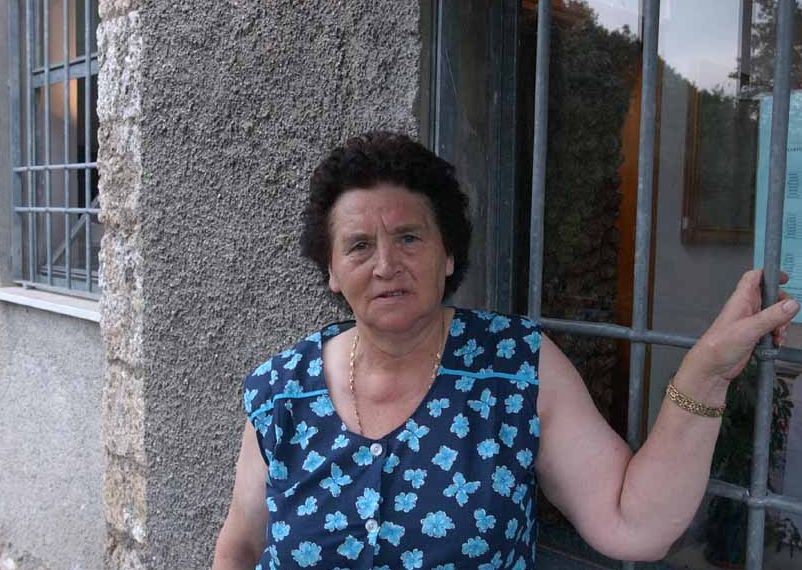Leopolda Bartolucci was ten years old on the day of the Sant'Anna di Stazzema massacre. She was an only child of two elderly parents. As soon as she learned of the arrival of the Nazi soldiers, her mother Vittoria decided to take away her daughter and niece, who had been a guest for a few days. They went to Valdicastello. Leopolda’s invalid father stayed at home to protect goods and food. For fear that they would set fire to the house, he had hidden some grain. Arriving in Valdicastello, Leopolda and her mother understood that something serious had happened back in Sant'Anna di Stazzema. Several people watched the smoke and fire rise up the mountain. Vittoria and Leopolda found accommodation and waited before setting off to return to Sant'Anna. First they saw the returning Nazi soldiers go by, then the wounded. Among the latter was a woman who warned Vittoria of what had happened and who told her of the death of her husband, whose body had been identified through his prosthetic leg. Leopolda was hosted by an aunt, a sister of her father, while her mother returned to Sant'Anna. Only after several days was Leopolda allowed to visit the village. She saw the destroyed house and the large grave on the church square, where her father had been murdered. Many men were crying desperately. Since then, Leopolda’s mother Vittoria lost her mind. Like many survivors, she was never the same.
In the years after 1944, Leopolda never left the country. She assisted in the transport of the corpses from the square in front of the church to the ossuary monument in 1948. She attended all the commemorations. While the town was depopulated due to the lack of infrastructure and emigration, Leopolda stayed and took care of the church and the tombs to commemorate the dead. She began to collect the testimonies of those who had survived, listened to them and wrote them down. She collected the objects that belonged to the victims, such as a doll, a watch, a dress and much more and tried to reconstruct the history of each object, to whom it had belonged, who had recovered it. Leopolda kept her archive at home in a small room until it was integrated into the newly renovated museum exhibition in 2007.
